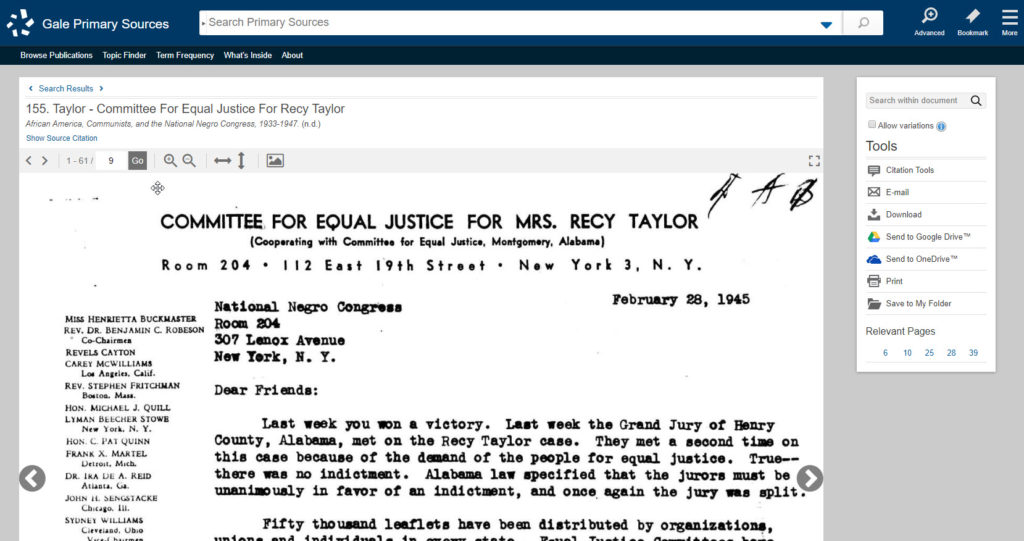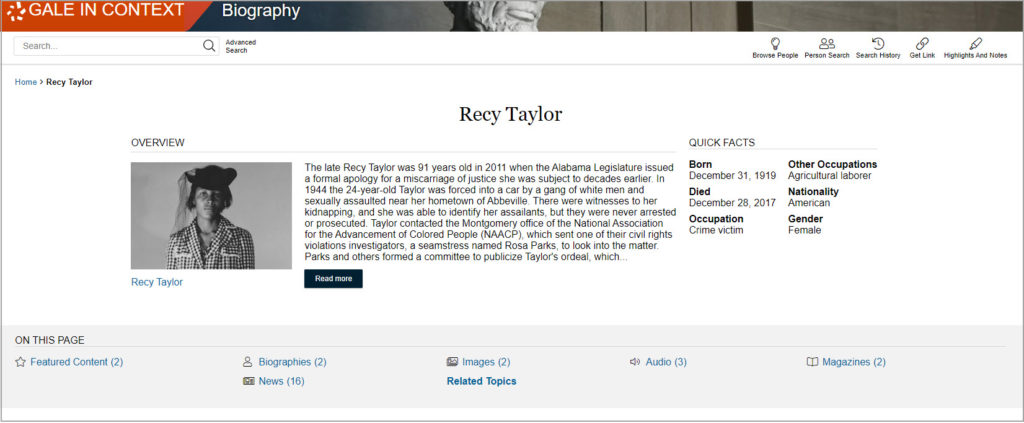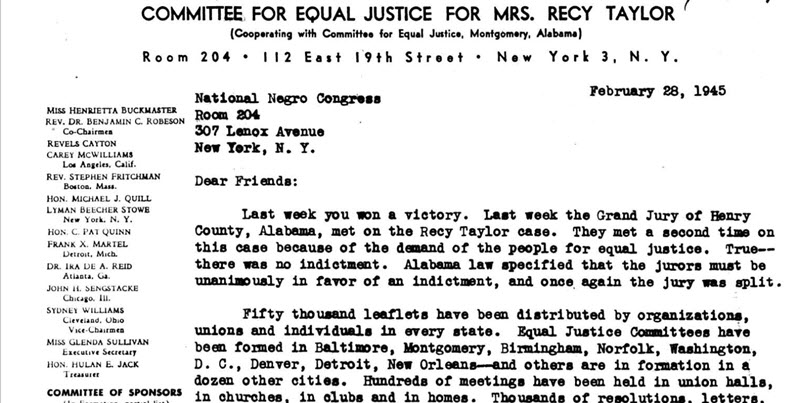| By Traci Cothran |
In this day of the deliberate proliferation of fake news, the facts are more important than ever. But it’s a dire time, as newspapers and journalists struggle to survive to bring us all the facts and uncover truths. I was reminded recently that it’s not only what is written that is important, but it’s key to understand what doesn’t always garner press—and the reasons behind those omissions.
This reminder came after watching the 2018 documentary The Rape of Recy Taylor. Ms. Taylor was African American, a young wife and mother in Alabama who was abducted at gunpoint by six white men while walking home from church one evening in 1944 and brutally gang-raped. She bravely reported the crime to police and identified several of her rapists, and her case was taken up by then-NAACP investigator Rosa Parks. Taylor was threatened with death if she spoke out; her home was firebombed; and her family was forced into hiding. Two grand juries—comprised entirely of white men—refused to indict the identified men, and they were never held accountable by the law or their community. Eventually, four of them confessed, implicating themselves and the others. Their names were Dillard York, Billy Howerton, Herbert Lovett, Luther Lee, Joe Culpepper, and Robert Gamble.
Back in 1944, it was not an uncommon occurrence for white men to rape black women, but it was incredibly rare for anyone to speak out against this vicious crime. And it was rare for the press to cover such a story. So how can you seek justice if the system is rigged and you can’t get the word out? Parks and others launched “The Committee for Equal Justice for Mrs. Recy Taylor”—and you can find these documents in Gale’s Archives Unbound. They advocated for a telegram campaign directed at Alabama Governor Chauncey M. Sparks, urging him to act. They raised funds for the medical care needed for Taylor; they held rallies in multiple states; they distributed some 200,000 leaflets and postcards. And they secured press wherever possible—with the African American press: the Alabama Tribune, Birmingham World, Pittsburgh Courier, and the Chicago Defender; and also, the New York Daily Worker. The white press refused to run the story.

Despite these efforts, Taylor never got her day in court. But her legacy is in her bravery—her act of speaking out fueled other women to come forward, some of whom got justice. It would take more than 50 years for the state of Alabama to issue Taylor an official apology for the miscarriage of justice (see Gale In Context: Biography, Recy Taylor).

Recy Taylor died in late 2017, and Oprah Winfrey honored her by speaking about Taylor in her Golden Globe acceptance speech a month later. The New York Times—which didn’t run the story about Taylor in 1944—published her obituary. It read: “Recy Taylor, Who Fought for Justice After a 1944 Rape, Dies at 97.”

Meet the Author
Traci Cothran is the director of Gale’s K12 content team as well as a history buff, so she can often be found watching videos from the early 1900s in Gale In Context: World History

